Earmuff Material Determines Comfort
Ear muffs come in different types, commonly referred to as earmuffs, which usually refer to full-sized over-ear headphones that cover the entire ear or noise-canceling/soundproof/protective earphones. They serve different purposes, and their materials typically vary accordingly.
Materials commonly used in gaming earmuffs include PU leather, sports mesh, protein leather etc.
Earmuffs snugly fit around the ears and skin, so the material of the earmuffs directly affects the comfort of wearing them. Additionally, different earmuff materials also affect their cleanliness, lifespan, and other aspects, making the choice of earmuff material crucial.
Earmuff Material Compared
1. Sponge
In reality, sponge material is not commonly used in large earmuff headphones; it is more frequently applied in medium and small earmuff products. However, at the bottom of large earmuff headphones and on the surface of the headphone unit, there is often a layer of sponge. The soft sponge material not only reduces pressure when worn but also enhances sound transmission by reducing loss. However, the sensation of skin contact with sponge is not very pleasant, and sponge is prone to aging and damage, making sponge earmuffs consumables that require frequent replacement.
2. PU leather
Among entry-level and mid-level gaming headsets, PU leather earmuffs are the most widely used. PU leather earmuffs can be divided into ordinary earmuffs, thickened earmuffs, and double-sided spliced earmuffs, as shown in the picture below.
1) Standard PU ear pad
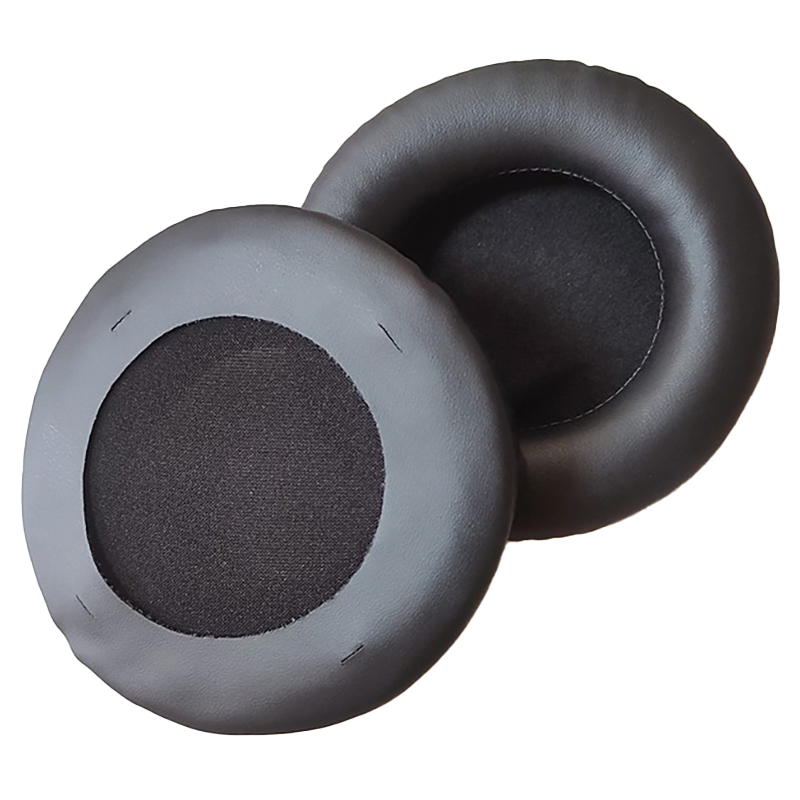
Advantages:
- Affordability: PU leather is generally more cost-effective.
- Durability: PU leather tends to be more resistant to wear and tear.
- Ease of Cleaning: PU leather is typically easier to clean and maintain.
- Vegan-Friendly: As a synthetic material, PU leather is suitable for individuals who prefer vegan options.
Disadvantages:
- Breathability: PU leather may not be as breathable as genuine leather, leading to potential discomfort during prolonged use.
- Less Natural Feel: PU leather may lack the natural texture and feel of genuine leather, which some users may prefer.
2) Double sided spliced PU ear pad
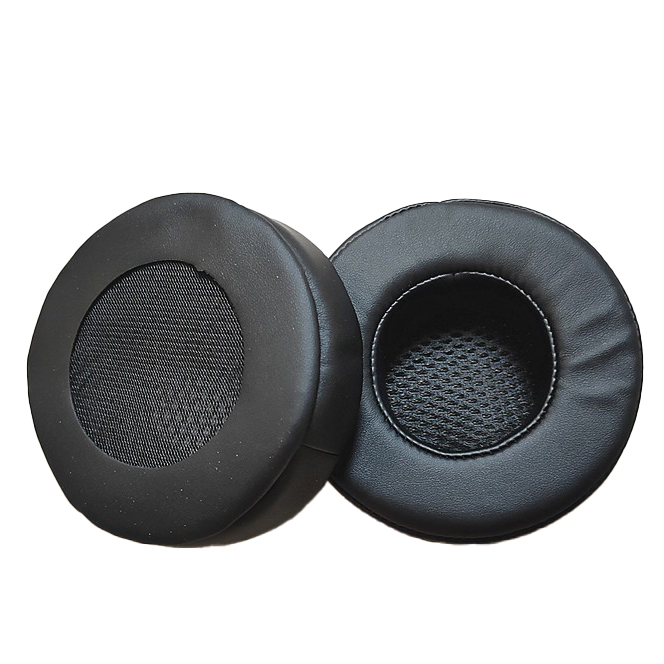
The double-sided spliced earmuffs use more complex processes to make the headphones look more high-end and meet the needs of most consumers.
Razer, SteelSeries, HyperX and other brands of gaming headsets all use this kind of double-sided spliced earmuffs. The overall shape of the headphones looks very simple and elegant, with texture. This ear pads can give headphones a more luxurious and premium appearance and feel.
3) Thicken PU ear pad
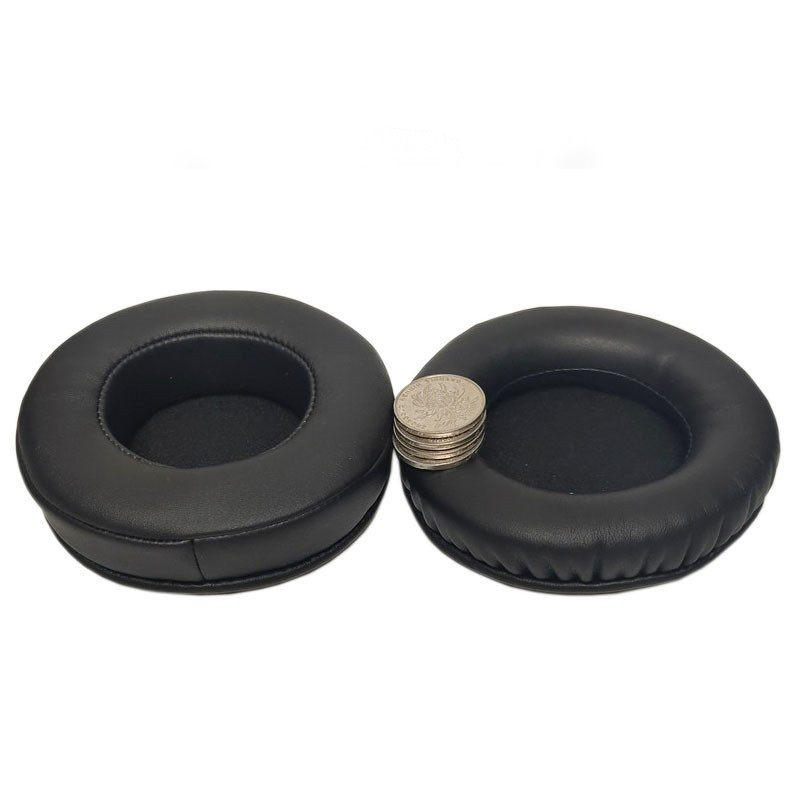
The thickened earmuffs can reach 10mm, which greatly improves the softness and comfort of the earmuffs, and also has better noise reduction function.
Advantages:
- Enhanced Comfort: Thicker PU leather ear pads provide additional cushioning, resulting in greater comfort during extended wear.
- Improved Noise Isolation: The thicker padding helps to better seal the ear, leading to improved noise isolation and a more immersive listening experience.
- Enhanced Durability: Thicker PU leather ear pads are often more durable and resistant to wear and tear, increasing their lifespan.
- Enhanced Stability: Thicker ear pads provide better stability and fit, reducing the likelihood of the headphones slipping or shifting during use.
3. Sports Mesh

Compared with PU earmuffs, the material of sports mesh has better breathability, making it more comfortable to wear, and is very suitable for people who are prone to sweating.
Advantages:
- Breathability: Sports mesh ear pads are highly breathable, allowing air to circulate freely around the ears during intense physical activity, reducing discomfort from sweat and heat buildup.
- Moisture Wicking: The mesh material is designed to wick away moisture, keeping the ears dry and comfortable even during rigorous workouts.
- Lightweight: Sports mesh ear pads are typically lightweight, ensuring minimal interference with your movements during sports or exercise.
- Quick Drying: The mesh material dries quickly, preventing the buildup of moisture and unpleasant odors over time.
- Enhanced Grip: The mesh texture may provide a better grip around the ears, helping to keep the headphones securely in place during physical activity.
4. Protein Leather
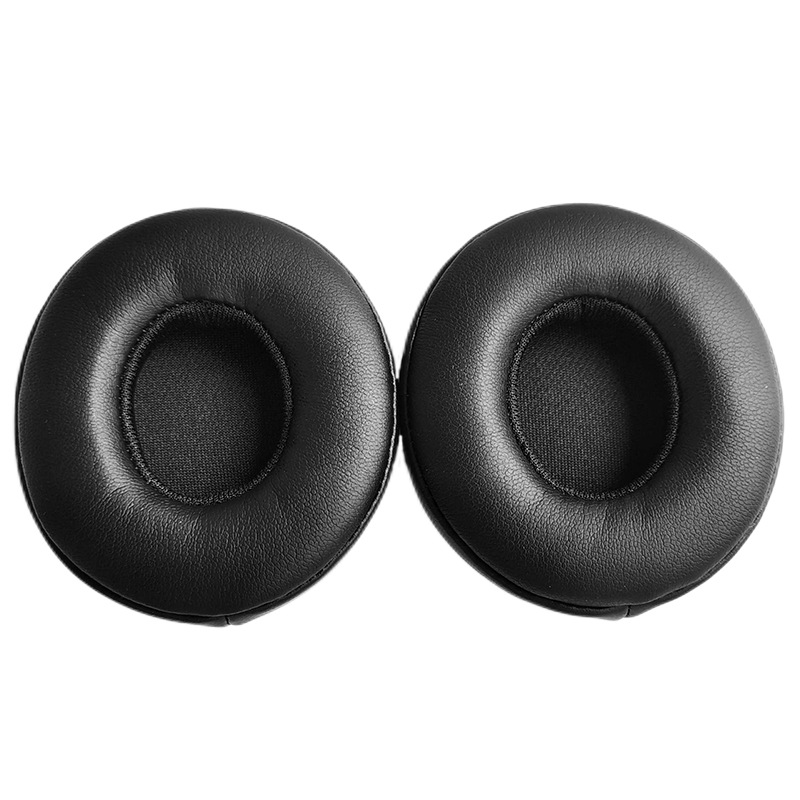
There are many types of synthetic leather, but those low-end synthetic leather earmuffs that feel stiff, non-breathable, and uncomfortable to touch not only cause discomfort but also make the ears sweaty, which people tend to avoid.
Many headphones now use protein leather. Although it is a type of synthetic leather, its texture is soft, and it has a certain degree of breathability. Overall, it feels more similar to genuine leather. However, protein leather is still a type of synthetic leather, and some manufacturers insist on falsely claiming it as a type of genuine leather, which is misleading. Moreover, high-quality imported protein leather typically has a lifespan of 3 to 5 years, while ordinary imitation protein leather only lasts about 1 year.
Advantages:
- Softness: Protein leather ear pads offer a soft and supple feel, providing comfort during extended listening sessions.
- Durability: Protein leather is durable and resistant to wear and tear, ensuring longevity even with frequent use.
- Easy Maintenance: Protein leather ear pads are typically easy to clean and maintain, requiring minimal effort to keep them looking and feeling fresh.
- Aesthetic Appeal: Protein leather has a sleek and luxurious appearance, adding a touch of elegance to the headphones.
5. Genuine Leather
Genuine leather is undoubtedly the best material for earmuffs as it is breathable and offers a great skin feel when in contact with the skin. However, genuine leather comes with a higher price tag, and leather earmuffs require regular cleaning to prevent leather aging. Nowadays, many low-end headphones use synthetic leather as a substitute for genuine leather, making it difficult for consumers to distinguish between the two. Although we can tell you that genuine leather has a softer texture, unique leather grain, and pores, identifying genuine leather can still be somewhat challenging.
6. Velvet Fabric
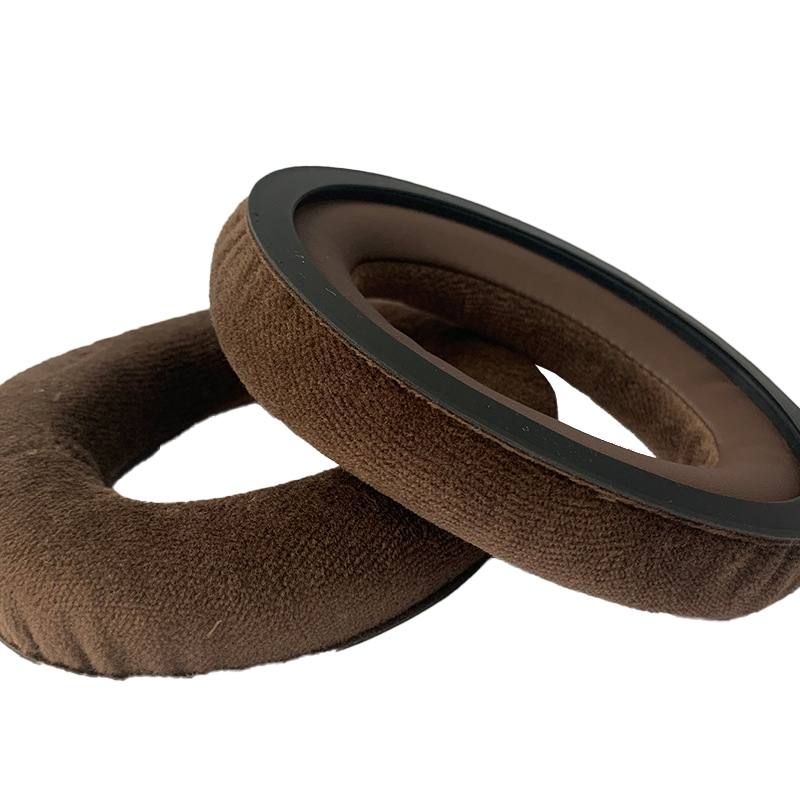
Despite its low cost, velvet fabric actually possesses excellent characteristics. It is skin-friendly, breathable, soft, and has a long lifespan. Additionally, velvet earmuffs can absorb sweat.
However, its ability to absorb sweat also means it is prone to dirt and grime accumulation. Furthermore, velvet fabric is not easy to clean, and it is not waterproof. Moisture can easily penetrate the earmuffs, leading to corrosion of internal components.
Therefore, for individuals who sweat a lot, it’s better to avoid choosing this type of earmuff.
Ear Cushions Introduction
Inside the ear cushions, sponge material is commonly used to support the ear cups and provide sufficient elasticity and comfort for wearing. For such cushions, being plump and supporting the ear cups adequately is the most basic requirement. Otherwise, it indicates a flaw in the manufacturing process. Additionally, the cushions should have enough elasticity. If they are too hard, they can cause discomfort, and if they are too soft, they may allow the earlobes to come into contact with the bottom of the ear cups, also leading to discomfort. Nowadays, some headphones use memory foam for cushions. Its slow rebound characteristic ensures both the seal and comfort of the headphones during wear, providing sufficient support and enhanced comfort.

